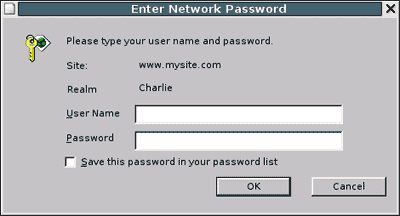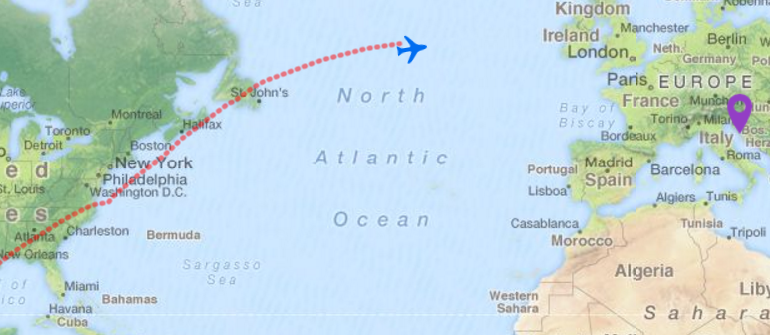$rows = 20; // define number of rows
$cols = 6;// define number of columns
echo "| row: ".$tr." column: ".$td." | "; } echo "

# _____ ____ ____ ____ _____ ____ ____ _ _ _ ____ ____ ____ # / // _ \/ __\/ _\/ __/ / _ \/ _ \/ \ /|/ \ /|/ \ / _ \/ _ \/ _ \ # | __\| / \|| \/|| / | \ | | \|| / \|| | ||| |\ ||| | | / \|| / \|| | \| # | | | \_/|| /| \_ | /_ | |_/|| \_/|| |/\||| | \||| |_/\| \_/|| |-||| |_/| # \_/ \____/\_/\_\\____/\____\ \____/\____/\_/ \|\_/ \|\____/\____/\_/ \|\____/ #
Warning – Be careful with this script i have modified this just for me but you can use it anyways.
'pass_protected/myfile_02.zip',
'2_docs' => 'pass_protected/myfile_32.zip',
'2_js' => 'pass_protected/my_docs.zip'
);
$file_name = $_GET['file'];
$file_name = isset($zip_files[$file_name]) ? $zip_files[$file_name] : null;
$file_name = $file_name ? Config::ABS_PATH . $file_name : null;
if (!$file_name) {
exit();
}
// make sure it's a file before doing anything!
if(file_exists($file_name)) {
/*
Do any processing you'd like here:
1. Increment a counter
2. Do something with the DB
3. Check user permissions
4. Anything you want!
*/
// required for IE
if(ini_get('zlib.output_compression')) { ini_set('zlib.output_compression', 'Off'); }
// get the file mime type using the file extension
switch(strtolower(substr(strrchr($file_name, '.'), 1))) {
//case 'pdf': $mime = 'application/pdf'; break;
case 'zip': $mime = 'application/zip'; break;
//case 'jpeg':
case 'jpg': $mime = 'image/jpg'; break;
default: $mime = 'application/force-download';
}
header('Pragma: public'); // required
header('Expires: 0'); // no cache
header('Cache-Control: must-revalidate, post-check=0, pre-check=0');
header('Last-Modified: '.gmdate ('D, d M Y H:i:s', filemtime ($file_name)).' GMT');
header('Cache-Control: private',false);
header('Content-Type: '.$mime);
header('Content-Disposition: attachment; filename="'.basename($file_name).'"');
header('Content-Transfer-Encoding: binary');
header('Content-Length: '.filesize($file_name)); // provide file size
header('Connection: close');
readfile($file_name); // push it out
exit();
}
?>


You can secure any file using this script.
It will not allow you to access without username and password.
1st step is to create .htaccess file in a folder which you want to protected.
2nd step is add index.php as shown in example. This will not work as it is but you can modify.
/*******************************************************/
.htaccess file
/********************************************************/
Options -Indexes
RewriteEngine On
RewriteCond $0 !^(favicon\.ico|favicon\.png|media|robots\.txt|crossdomain\.xml|css|js)
RewriteRule .* index.php?file=$0 [QSA,L] # pass everything thru php

I want my videos URL to keep hidden from the users while still, they can able to see the video.
It have 2 parts.
1. PHP code and
2. HTML video Code
0||$end<$size)
header('HTTP/1.0 206 Partial Content');
else
header('HTTP/1.0 200 OK');
header("Content-Type: video/mp4");
header('Accept-Ranges: bytes');
header('Content-Length:'.($end-$begin));
header("Content-Disposition: inline;");
header("Content-Range: bytes $begin-$end/$size");
header("Content-Transfer-Encoding: binary\n");
header('Connection: close');
$cur=$begin;
fseek($fm,$begin,0);
while(!feof($fm)&&$cur<$end&&(connection_status()==0))
{ print fread($fm,min(1024*16,$end-$cur));
$cur+=1024*16;
usleep(1000);
}
die();
?>

First it is important to know how it works –
L.marker([48.8631169, 2.3708919], { rotationAngle: 45 }).addTo(map);
rotationAngle property need a value and this is key. You will have to generate that dynamically based on aircraft position and destination airport. Function below does the same calculate and give rotationAngle.
Function in Python
def computeHeading(lat1, long1, lat2, long2):
import math
rlat1 = math.radians(lat1)
rlat2 = math.radians(lat2)
dlong = math.radians(long2 - long1)
y = math.cos(rlat2) * math.sin(dlong)
x = math.cos(rlat1) * math.sin(rlat2) - math.sin(rlat1) * math.cos(rlat2) * math.cos(dlong)
heading = round(math.degrees(math.atan2(y, x)) + 360, 4) % 360
return heading
Keep in mind that lat1 and long1 are the aircraft’s position. And lat2, long2 are airport destination where aircraft is heading.
Function in PHP
function computeHeading($lat1, $long1, $lat2, $long2) // lat1 and long1 are the aircraft's position
{
$rlat1 = deg2rad($lat1);
//$rlat2 = radians($lat2);
//$rlat1 = radians($lat1);
$rlat2 = deg2rad($lat2);
$dlong = deg2rad($long2 - $long1);
//$dlong = radians(long2 - long1);
$y = cos($rlat2) * sin($dlong);
$x = cos($rlat1) * sin($rlat2) - sin($rlat1) * cos($rlat2) * cos($dlong);
$heading = round(degrees(atan2($y, $x)) + 360, 4) % 360;
return $heading;
}
Function in JavaScript
function computeHeading(lat1, long1, lat2, long2)
{
// Converts from degrees to radians.
Math.radians = function(degrees) {
return degrees * Math.PI / 180;
};
// Converts from radians to degrees.
Math.degrees = function(radians) {
return radians * 180 / Math.PI;
};
var rlat1 = Math.radians(lat1);
var rlat2 = Math.radians(lat2);
var dlong = Math.radians(long2 - long1);
var y = Math.cos(rlat2) * Math.sin(dlong);
var x = Math.cos(rlat1) * Math.sin(rlat2) - Math.sin(rlat1) * Math.cos(rlat2) * Math.cos(dlong);
var heading = Math.round(Math.degrees(Math.atan2(y, x)) + 360, 4) % 360;
return heading;
}
Export php array to CSV
CSV (comma-separated values) is the most widely supported format for transferring tabular data. Exporting data in CSV format is very common in web applications. This simple example will help you get started with CSV and PHP. The main goal is to create a simple way to export data from your website or web application into a CSV that can be downloaded by the user.
$data = array(
array('name' => 'A', 'mail' => 'a@gmail.com', 'age' => 43),
array('name' => 'C', 'mail' => 'c@gmail.com', 'age' => 24),
array('name' => 'B', 'mail' => 'b@gmail.com', 'age' => 35),
array('name' => 'G', 'mail' => 'f@gmail.com', 'age' => 22),
array('name' => 'F', 'mail' => 'd@gmail.com', 'age' => 52),
array('name' => 'D', 'mail' => 'g@gmail.com', 'age' => 32),
array('name' => 'E', 'mail' => 'e@gmail.com', 'age' => 34),
array('name' => 'K', 'mail' => 'j@gmail.com', 'age' => 18),
array('name' => 'L', 'mail' => 'h@gmail.com', 'age' => 25),
array('name' => 'H', 'mail' => 'i@gmail.com', 'age' => 28),
array('name' => 'J', 'mail' => 'j@gmail.com', 'age' => 53),
array('name' => 'I', 'mail' => 'l@gmail.com', 'age' => 26),
);
$fileName_1 = 'Manifest.csv';
header("Cache-Control: must-revalidate, post-check=0, pre-check=0");
header('Content-Description: File Transfer');
header("Content-type: text/csv");
header("Content-Disposition: attachment; filename={$fileName_1}");
header("Expires: 0");
header("Pragma: public");
$fh1 = @fopen( 'php://output', 'w' );
$headerDisplayed1 = false;
foreach ( $data as $data1 ) {
// Add a header row if it hasn't been added yet
if ( !$headerDisplayed1 ) {
// Use the keys from $data as the titles
fputcsv($fh1, array_keys($data1));
$headerDisplayed1 = true;
}
// Put the data into the stream
fputcsv($fh1, $data1);
}
// Close the file
fclose($fh1);
// Make sure nothing else is sent, our file is done
exit;
add($interval);
$period = new DatePeriod(
new DateTime($start),
$interval,
$realEnd
);
foreach($period as $date) {
$array[] = $date->format('Y-m-d');
}
return $array;
}
// Call the function
$dates = getDatesFromRange('2015-10-01', '2015-12-05');
// Print the output
print_r($dates);
Array
(
[0] => 2015-10-01
[1] => 2015-10-02
[2] => 2015-10-03
[3] => 2015-10-04
[4] => 2015-10-05
[5] => 2015-10-06
[6] => 2015-10-07
[7] => 2015-10-08
[8] => 2015-10-09
[9] => 2015-10-10
[10] => 2015-10-11
[11] => 2015-10-12
[12] => 2015-10-13
[13] => 2015-10-14
[14] => 2015-10-15
[15] => 2015-10-16
[16] => 2015-10-17
[17] => 2015-10-18
[18] => 2015-10-19
[19] => 2015-10-20
[20] => 2015-10-21
[21] => 2015-10-22
[22] => 2015-10-23
[23] => 2015-10-24
[24] => 2015-10-25
[25] => 2015-10-26
[26] => 2015-10-27
[27] => 2015-10-28
[28] => 2015-10-29
[29] => 2015-10-30
[30] => 2015-10-31
[31] => 2015-11-01
[32] => 2015-11-02
[33] => 2015-11-03
[34] => 2015-11-04
[35] => 2015-11-05
[36] => 2015-11-06
[37] => 2015-11-07
[38] => 2015-11-08
[39] => 2015-11-09
[40] => 2015-11-10
[41] => 2015-11-11
[42] => 2015-11-12
[43] => 2015-11-13
[44] => 2015-11-14
[45] => 2015-11-15
[46] => 2015-11-16
[47] => 2015-11-17
[48] => 2015-11-18
[49] => 2015-11-19
[50] => 2015-11-20
[51] => 2015-11-21
[52] => 2015-11-22
[53] => 2015-11-23
[54] => 2015-11-24
[55] => 2015-11-25
[56] => 2015-11-26
[57] => 2015-11-27
[58] => 2015-11-28
[59] => 2015-11-29
[60] => 2015-11-30
[61] => 2015-12-01
[62] => 2015-12-02
[63] => 2015-12-03
[64] => 2015-12-04
[65] => 2015-12-05
)
I was working on parsing KML data file from different resources which had different urls and Cesiumjs was unable to read/parse, that is how i come to know enabling cross-origin resource sharing.
It is also called CORS. Here is more details .
Following these steps you can enable “CORS”.
1. First check if you have apache module installed, using php.
2. Use command line to check if you have “Access-Control-Allow-Origin: *”
Command is - curl -I http://yourwebsite.com
3. If you don’t see this line “Access-Control-Allow-Origin: *” in curl -I output you need to add and enable it in either in PHP file ot .htacces file.
HTTP/1.1 302 Found Date: Sat, 19 Sep 2015 00:31:41 GMT Server: Apache Access-Control-Allow-Origin: * Set-Cookie: PHPSESSID=k1ejs4ra2gsu2id387h472one2; path=/ Expires: Thu, 19 Nov 1981 08:52:00 GMT Cache-Control: no-store, no-cache, must-revalidate, post-check=0, pre-check=0 Pragma: no-cache Location: https://phpmind.com/index.php Content-Type: text/html; charset=UTF-8 Set-Cookie: BIGipServer~DART-Dev~DART=1241032896.20480.0000; path=/
4. Now its time to add code and enable your missing part!
In .htaccess
Header set Access-Control-Allow-Origin "*"
In PHP file
header("Access-Control-Allow-Origin: *"); // for all
header('Access-Control-Allow-Origin: http://www.rnai.technology'); // For particular URL
header('Access-Control-Allow-Origin: http://phpmind.com');
header('Access-Control-Allow-Origin: http://maps.google.com');
After that you need to test using
Command is - curl -I http://yourwebsite.com
You must see Access-Control-Allow-Origin: *” with headers.
If you don’t have command line access use this code to see which apache modules are installed.
This will show a list like that.
By the way this not my server 🙂
Array
(
[0] => core
[1] => prefork
[2] => http_core
[3] => mod_so
[4] => mod_auth_basic
[5] => mod_auth_digest
[6] => mod_authn_file
[7] => mod_authn_alias
[8] => mod_authn_anon
[9] => mod_authn_dbm
[10] => mod_authn_default
[11] => mod_authz_host
[12] => mod_authz_user
[13] => mod_authz_owner
[14] => mod_authz_groupfile
[15] => mod_authz_dbm
[16] => mod_authz_default
[17] => util_ldap
[18] => mod_authnz_ldap
[19] => mod_include
[20] => mod_log_config
[21] => mod_logio
[22] => mod_env
[23] => mod_ext_filter
[24] => mod_mime_magic
[25] => mod_expires
[26] => mod_deflate
[27] => mod_headers
[28] => mod_usertrack
[29] => mod_setenvif
[30] => mod_mime
[31] => mod_dav
[32] => mod_status
[33] => mod_autoindex
[34] => mod_info
[35] => mod_dav_fs
[36] => mod_vhost_alias
[37] => mod_negotiation
[38] => mod_dir
[39] => mod_actions
[40] => mod_speling
[41] => mod_userdir
[42] => mod_alias
[43] => mod_substitute
[44] => mod_rewrite
[45] => mod_proxy
[46] => mod_proxy_balancer
[47] => mod_proxy_ftp
[48] => mod_proxy_http
[49] => mod_proxy_ajp
[50] => mod_proxy_connect
[51] => mod_cache
[52] => mod_suexec
[53] => mod_disk_cache
There are 2 ways to convert Seconds into minute. Its super simple.
One -
$seconds = "110";
$minutes = floor($seconds/60);
$secondsleft = $seconds%60;
if($minutes<10)
$minutes = "0" . $minutes;
if($secondsleft<10)
$secondsleft = "0" . $secondsleft;
echo "$minutes:$secondsleft Sec";
echo "
";
Two -
echo gmdate("i.s", $seconds);